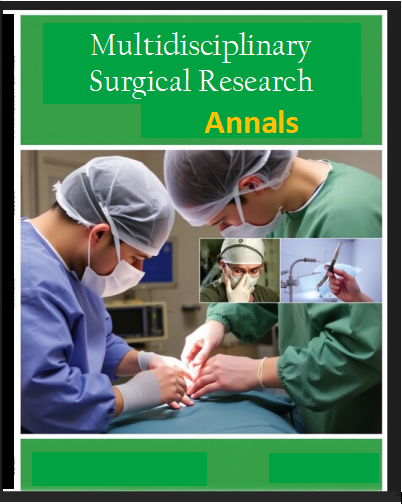Need of Surgery after Failure of Conservative Treatment in Acute Appendicitis within 1 Year at Islamabad Medical Complex, Pakistan
Abstract
Background: Conservative, antibiotic-first management of imaging-confirmed uncomplicated acute appendicitis is now established as a viable alternative to surgery in selected patients, but regional outcome data from South Asia remain limited, and predictors of treatment failure are incompletely characterized. Methods: This prospective observational cohort study was conducted between April 2023 and April 2024. Adults (≥16 years) with a first episode of uncomplicated acute appendicitis confirmed by imaging were enrolled and managed with a standardized antibiotic protocol. The primary outcome was the requirement for appendectomy within one year. Baseline demographics, clinical parameters, and imaging features—including appendiceal diameter—were recorded. Statistical analyses included univariate and multivariate logistic regression to identify independent predictors of surgery, with surgery-free survival estimated using Kaplan-Meier analysis. Results: Thirty-three patients (mean age 30.2 ± 10.1 years; 54.5% male) were included. During the index admission, conservative management failed in 2 patients (6.1%). By six months, two additional patients (6.1%) required appendectomy for recurrence; between six and twelve months, three more patients (9.1%) underwent surgery. The cumulative appendectomy rate at one year was 21.2%, yielding a surgery-free survival rate of 78.8%. Comparative analysis found no significant differences in age, sex, comorbidities, symptom duration, WBC, or CRP between surgery-free and surgical groups. However, an appendiceal diameter >10 mm was significantly associated with the need for surgery (42.9% vs. 7.7%; p=0.045) and remained an independent predictor in multivariate analysis (OR 6.5, 95% CI 1.12–37.6; p=0.037). No deaths or major complications occurred. Conclusion:In this South Asian cohort, conservative management of uncomplicated acute appendicitis achieved a high surgery-free survival rate at one year, with a low incidence of complications. Appendiceal diameter >10 mm was the only independent predictor of treatment failure. These findings support the adoption of non-operative management as a safe and effective option for selected patients in similar resource settings, provided that thorough imaging assessment and close follow-up are ensured.
Keywords: Acute Appendicitis, Conservative Management, Antibiotics, Appendiceal Diameter, South Asia, Surgery-Free Survival, Predictors, Prospective Cohort




